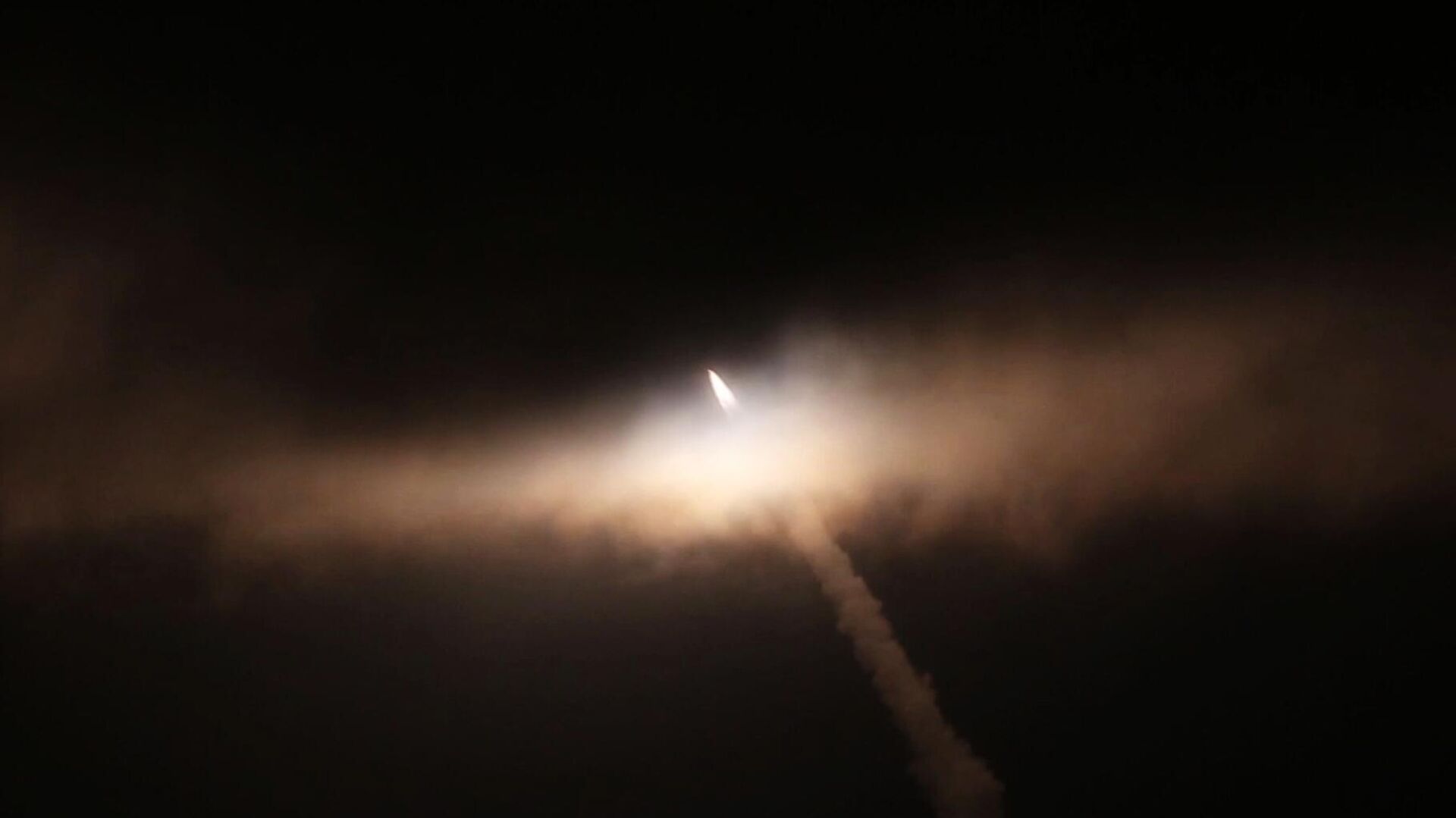https://sputnikglobe.com/20211121/space-force-general-admits-that-us-lagging-behind-russia-china-in-hypersonic-weapons-1090894495.html
Space Force General Admits That US Lagging Behind Russia, China in Hypersonic Weapons
Space Force General Admits That US Lagging Behind Russia, China in Hypersonic Weapons
Sputnik International
Last month, the US military botched its own hypersonic missile testing, while China reportedly conducted a test of a missile capable of sending nuclear weapons... 21.11.2021, Sputnik International
2021-11-21T03:22+0000
2021-11-21T03:22+0000
2022-08-06T13:26+0000
military & intelligence
russia
china
hypersonic
hypersonic missiles
hypersonic weapons
us
https://cdn1.img.sputnikglobe.com/img/07e5/0b/15/1090894680_0:28:1821:1052_1920x0_80_0_0_3c3c3ede6448ada6ef06e6351c0ccddd.jpg
US Space Force General David Thompson on Saturday warned that American hypersonic missile capabilities are "not as advanced" as those of China or Russia, implying that the US is falling behind in producing the newest and most cutting-edge weaponry.In an interview conducted at the Halifax International Security Forum in Canada, Thompson stated that the United States falling behind the other two countries could be detrimental to national security.Thompson also compared the use of hypersonic missiles to a snowball fight during his interview, saying they are "changing the game" for national defence and security. When a snowball is thrown, you can usually predict where it will land. However, if the projectile is thrown in a different direction, it is more difficult to detect — but it will still hit you.When speaking about China's position in terms of technological capabilities compared to the United States, the general noted that the speed with which China has caught up with the most developed countries and the United States is amazing, and the Chinese have "moved incredibly quickly in space".According to Thompson, if this speed persists for an extended length of time, China is "likely to exceed us in terms of capability".Answering the host's question about how the Chinese managed to establish such a fast cycle of production and innovation implementation, Thompson echoed his colleagues, blaming the excessive bureaucracy in the US military.He added "the fact that we have not needed to move so quickly", in the past couple of decades in terms of technology development contributed to the slowdown as well. Moreover, according to an October report by the Congressional Research Service (CRS), the US is falling behind China and Russia because "most US hypersonic weapons, in contrast to those in Russia and China, are not being designed for use with a nuclear warhead".The US is planning to spend $3.8 billion on hypersonic missiles in the fiscal year that runs through 2022, according to the paper. And earlier on Saturday, the Defence Department announced that the Alabama-based company Dynetics has been awarded a $478 million contract to construct Hypersonic Thermal Protection System prototypes for the US Army.Hypersonic missiles are classified as weapons that travel at a speed of Mach 5 or higher, meaning at least five times the speed of sound.
https://sputnikglobe.com/20211029/us-gen-says-chinas-done-hundreds-of-hypersonic-weapon-tests-while-dod-is-bureaucratic---report-1090297155.html
china
Sputnik International
feedback@sputniknews.com
+74956456601
MIA „Rossiya Segodnya“
2021
News
en_EN
Sputnik International
feedback@sputniknews.com
+74956456601
MIA „Rossiya Segodnya“
Sputnik International
feedback@sputniknews.com
+74956456601
MIA „Rossiya Segodnya“
military & intelligence, china, hypersonic, hypersonic missiles, hypersonic weapons, us
military & intelligence, china, hypersonic, hypersonic missiles, hypersonic weapons, us
Space Force General Admits That US Lagging Behind Russia, China in Hypersonic Weapons
03:22 GMT 21.11.2021 (Updated: 13:26 GMT 06.08.2022) Kirill Kurevlev
Managing Editor
Last month, the US military botched its own hypersonic missile testing, while China reportedly conducted a test of a missile capable of sending nuclear weapons around the globe this summer. Russia also successfully test-fired its "Zircon" hypersonic missile in the arctic on 18 November.
US Space Force General David Thompson on Saturday warned that American hypersonic missile capabilities are "not as advanced" as those of China or Russia, implying that the US is falling behind in producing the newest and most cutting-edge weaponry.
In an
interview conducted at the Halifax International Security Forum in Canada, Thompson stated that the United States falling behind the other two countries could be detrimental to national security.
"We have catching up to do very quickly. The Chinese have an incredible hypersonic programme", he said. "It's a very concerning development ... it greatly complicates the strategic warning problem".
Thompson also compared the use of hypersonic missiles to a snowball fight during his interview, saying they are "changing the game" for national defence and security. When a snowball is thrown, you can usually predict where it will land. However, if the projectile is thrown in a different direction, it is more difficult to detect — but it will still hit you.
"That's what a hyperglide vehicle does", he said in reference to another class of hypersonic missiles. "You no longer have that predictability. So every launch of a certain type, regardless of where it's headed, now has the potential to be a threat".
When speaking about China's position in terms of technological capabilities compared to the United States, the general noted that the speed with which China has caught up with the most developed countries and the United States is amazing, and the Chinese have
"moved incredibly quickly in space".
"In terms of their technology and capability, I would argue that we, both the US and our close partners and allies, are still the best in the world in that technology", he noted. "But they have come very close very quickly. And they are cycling their technology much quicker, at twice the rate we are".
According to Thompson, if this speed persists for an extended length of time, China is "likely to exceed us in terms of capability".
"They intend to use space the way they have watched us use it for decades", the general stressed.
Answering the host's question about how the Chinese
managed to establish such a fast cycle of production and innovation implementation, Thompson echoed his colleagues, blaming the excessive bureaucracy in the US military.
"Part of it is, I'll say the bureaucracy that we've built into our defence and acquisition enterprise, not just in space but other areas", he underscored, "and that has slowed us down in many areas".
He added "the fact that we have not needed to move so quickly", in the past couple of decades in terms of technology development contributed to the slowdown as well.

29 October 2021, 02:48 GMT
Moreover, according to an
October report by the Congressional Research Service (CRS), the US is falling behind China and Russia because "most US hypersonic weapons, in contrast to those in Russia and China,
are not being designed for use with a nuclear warhead".
"As a result, US hypersonic weapons will likely require greater accuracy and will be more technically challenging to develop than nuclear-armed Chinese and Russian systems", the service's experts stated.
The US is planning to spend $3.8 billion on hypersonic missiles in the fiscal year that runs through 2022, according to the paper.
And earlier on Saturday, the Defence Department announced that the Alabama-based company Dynetics has been awarded a $478 million contract to construct Hypersonic Thermal Protection System prototypes for the US Army.
"Dynetics [of] Huntsville, Alabama, was awarded a $478,598,908 …contract for the development of Hypersonic Thermal Protection System prototypes, support materials research, and novel inspection and acceptance criteria", the Defence Department said in a release on Friday.
Hypersonic missiles are classified as weapons that travel at a speed of Mach 5 or higher, meaning at least five times the speed of sound.



